Carrie
Melissa Sanford
18 January 1874 – 30 December 1957
The
thought of the old west of the 1870s conjures up images of settlers
clearing sagebrush and turning the soil, building homes and
establishing communities in the wilderness. Indian raids were a
constant threat to anyone so bold as to venture into the west and claim
it as theirs, or of miners staking their claims with hopes of
striking it rich. Not to mention cowboys riding the range, driving
cattle to market, ever on guard against rustlers. Outlaws on the run
taking what others worked so hard for and hiding out in the vast
secluded canyons, poised to strike again. Gunslingers for hire to
eliminate those who stood in the way of anyone willing to pay for their
services.
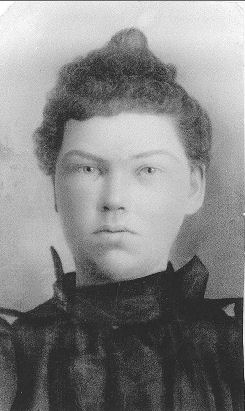
Now contrast that to the late 1950s. The scenes of the old west now only played on movie screens and television. Rather than trains or covered wagons, people traversed the continent in airliners in a matter of a few hours. Instead of hitching up the team and buggy, people went to town, or anywhere else they wanted, by automobile. Supersonic jet airplanes streaked through the skies, atomic powered submarines prowled the depths of the sea, and Sputnik I orbited the earth. Such a different world than what had been only three quarters of a century earlier. So much had changed in a relatively short period of time, all within the the lifetime of Carrie Melissa Sanford. What a story she must have to tell. . .
She was born at Warm Creek in Millard County, Utah on June 18, 1874 to Emulous Sanford and Catherine Emma Cloward. Warm Creek, which is now called Gandy, is located in northwest Millard County, near the Utah/Nevada boarder.
Emulous Sanford was born on
August 19, 1835 in Canton,
St. Lawrence County, New York to Ira and Martha Stiles Sanford. As a
young man he came west to Oregon where he was married Leah Nichols in
1864. Their first son, William Edgar was born on October 25, 1865 in
Astoria Oregon. At some point, they moved to California and two more
children, a son and a daughter were born. The little girl died and
the mother took the
baby and left Emulous and Will on their own. Eventually they drifted
to Utah where they encountered the Mormons and joined the Church.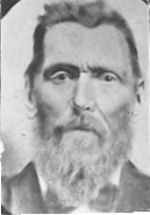
Emulous Sanford
Catherine Emma
Cloward was born on May 25, 1845 in Bear Creek, Hancock County,
Illinois to Daniel Cloward and Ruth Bailey Logan. She crossed the
plains with her family in 1852 when she was seven years old and
settled in Springville, Utah. When Catheine was 17 she married Lemuel
Hauge on April 20, 1862. They were sealed in the Endowment House in
Salt Lake City on December 6, 1862. They made their home in
Springville where they had three children, Annie Elizabeth (19 Jan
1863), Lemuel Thomas (17 Nov 1864), and Mary Clarinda (11 Mar 1869).
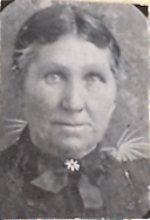
CathetrineEmma
Cloward
Catherine was left a widow in 1869 when her husband was killed by Indians while working on the railroad in Nebraska. Catherine and Emulous met and where married for time only in the Endowment House on March 13, 1871. They began their marriage with four children. Catherine gave birth to twins on February 4, 1872 in Springville. Ruth Vandetta died at birth and Joseph L. only lived a month and died on March 8, 1872.
They lived there for a short time and then moved to Deep Creek (now Ibapah, Tooele County, Utah) were her sisters, Ella Elisabeth (4 May 1877) and Adalisha who went by Addie (25 Mar 1879), where born.
In 1879 Emulous and Will went north to Basin in Cassia County, Idaho where some new land was being settled. They staked a claim and set up a farm and built a log cabin with a dirt floor for the family. While they were away, Carrie became very sick and some of the neighbors didn't think she would live until they returned. In June 1880 when Carrie was six years old they made the move to Idaho. The move of nearly two hundred miles was made by covered wagon through the desert and mountains. She spent her childhood in Basin and grew into a young lady.
When she was a child there were some Indians living near them in the Basin and she played with some of the little Indian children. They liked to take the empty thread boxes and empty spools and make toy wagons with the boxes and use the spools for wheels. Her mother and some of the Indian squaws would sit around laughing and watching them play.
One time three painted
warriors came to the house at suppertime asking for food. The
children were afraid of them, but their mother was brave and offered
them a cucumber, pronouncing the word for them as they took it. After
eating it, they tried to pronounce cucumber and said "cucumber
wine-o" or something like that, meaning "good". She
also offered biscuits and they said "bis-ee-cutt, wine-o".
Therefore, she managed to make friends with them and there were no
problems.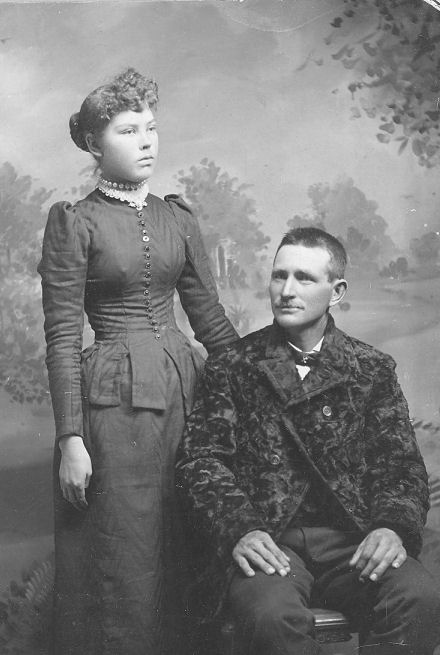
Carrie and her half brother,
Lemuel Hauge
Emulous and other settlers went into the mountains nearby to get logs to built a schoolhouse. It was used for school, church, and recreation for some time. In the summer a bowery was built of willows in front of the schoolhouse for celebrating the Fourth of July and other events. Snow was brought down from the mountains to freeze ice cream as a special treat for these activities. Everybody was happy and had good times with very little expense. Before the schoolhouse was built they held dances at the Sanford home. People came from all around to dance to an orchestra consisting of a violin and a banjo. Later the church and recreation hall was built.
Two more brothers and two more sisters were added to the family in Basin; Mabel (22 Feb 1882), Arthur Marion (23 Mar 1884), Martha Jane (20 Apr 1886), and Farmer (14 Aug 1889) who only lived two weeks.
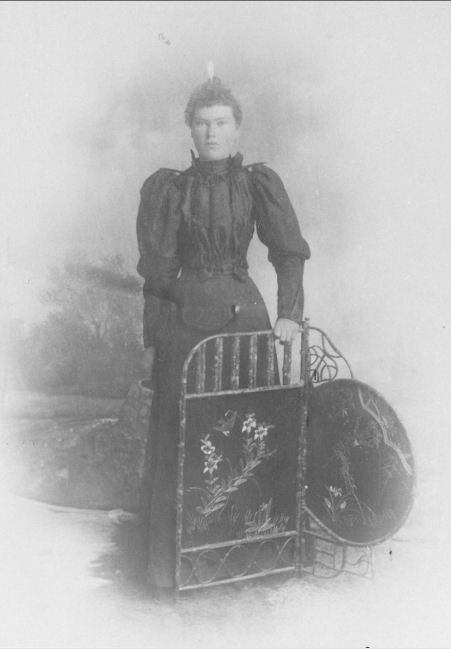
Carrie as a young woman
After finishing school in
Basin, Carrie attended the Cassia Stake Academy in Oakley for two
winters. She drove a horse and buggy the seven miles to and from
Oakley each morning and night. At the academy she took part in drama
productions and other entertainment. She would play the accordion and
gave many readings.
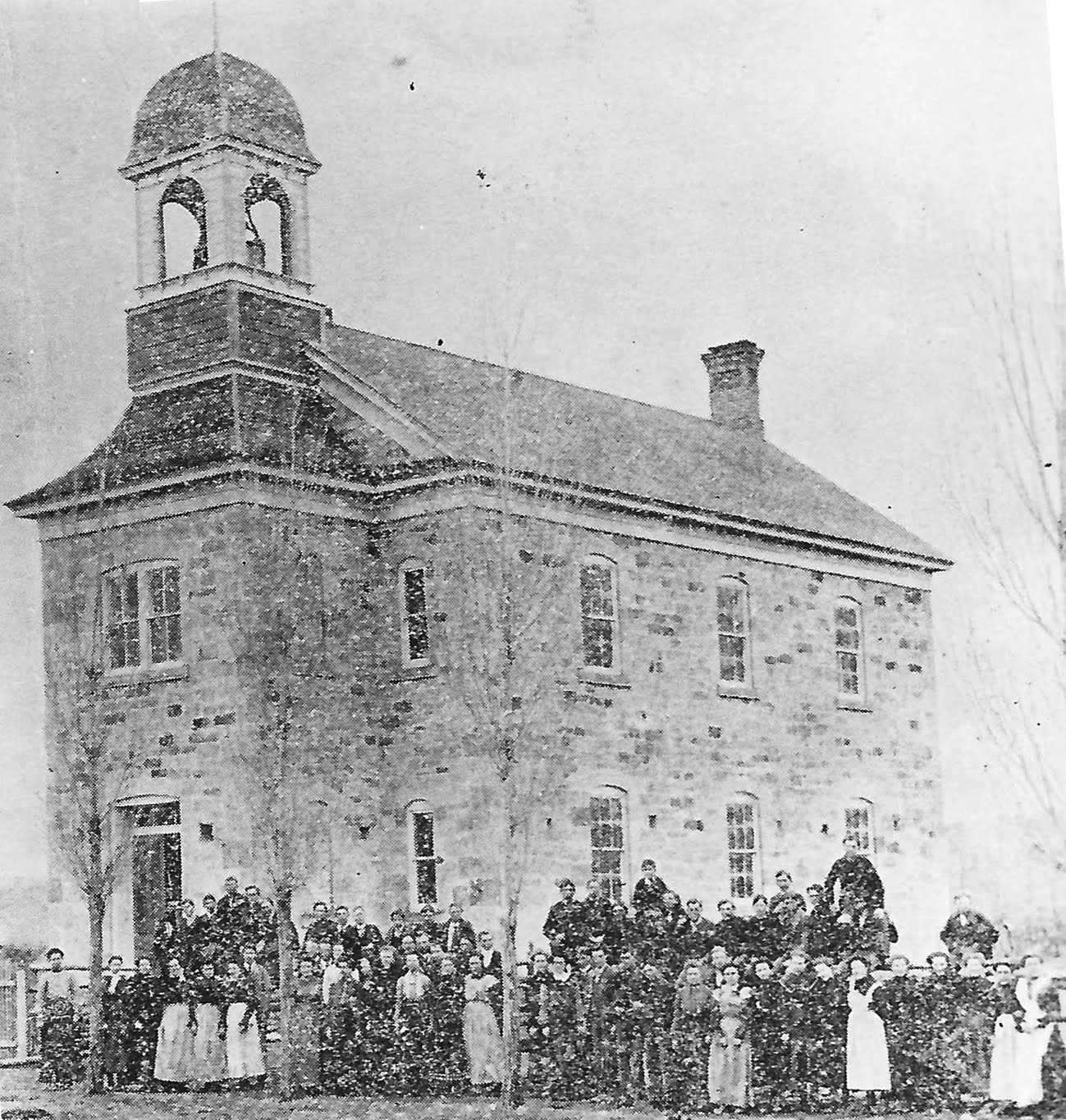
The Cassia Stake Acadamey
The Cassia Stake Academy was established on November 18, 1889 with George A. Day as principal. There were initially 37 students enrolled which increased to 57 during the first term. Carrie's name is listed on the role as being in that first class. They met in an old log hall for the first month or six weeks until the a rock building was completed.
One summer Carrie lived with her Uncle Farmer Sanford in Ogden, Utah because she had a heart condition and went there to rest. She also worked at the hotel in Albion, which was the county seat for Cassia County at the time.
Carrie attended the Albion State Normal Teacher College for a short time to get her teaching certificate. Sometimes she went to the jail where Diamondfield Jack was being held and talked to him. She and her friends attended his trial and talked about how good-looking he was.
Diamondfield
Jack was a young cowboy by the name of Jackson Lee Davis who was
hired in 1895 by a wealthy cattle company to intimidate any sheepmen
who might bring their flocks onto the ranges in Cassia County. When
two Mormon sheepherders were found murdered, Davis became the prime
suspect in the case. He was tried in the farming community of Albion
before a jury that contained no cattlemen. In spite of high-powered
legal help provided by the
cattle company and although no evidence placed him at the scene of
the murders, he was quickly
convicted and sentenced to hang. Appeals kept him alive until the
true murderers had confessed
but it wasn't until 1902 that he was pardoned. It was the biggest
thing to happen in Cassia County and has
been a controversial topic of conversation for years. Many articles
have been published about this colorful western character and books
have been written of his story. He is still a legend in time. 
Diamondfield Jack
After receiving her teaching certificate, she went back to Basin where she worked in the Primary and Mutual and taught school for one year.
On
June 15, 1898 she married Charles Wiseman Dayley (14 Jun 1867) In
Basin. Charles was the son of Enoch Rhodes Dayley and Gennette
Cooley. At first, they lived in a granary for a while until they
could move into a more suitable home. They lived in Basin for about
five years where their first three children were born; Arthur Valoris
who was called Slim (8 Feb 1900), Vyla June (4 Jun 1901), and Charles
Myrl who went by Myrl (24 Jul 1903).
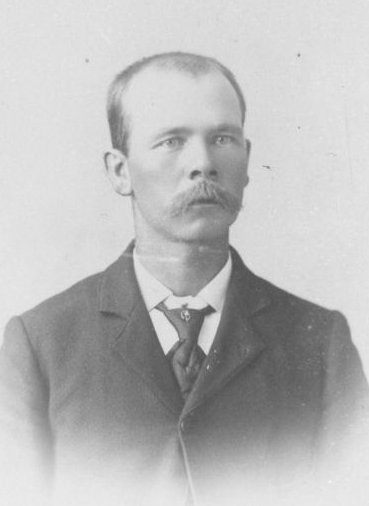
Charles Wiseman Dayley
In 1904 new land was made available north of Oakley. The Minidoka Dam which was under construction would provide water for the project. They homesteaded a farm in Starr's Ferry where they lived for many years. They built a log house with a dirt roof.There was sagebrush all around, which was their fuel. They hauled water from the Snake River about a mile and a half away until the canals were completed.
Charles and Carrie worked hard to improve their homestead and make it into a home and farm. They built a chicken coup and a corral, they had a team of horses, a few head of cattle, two or three pigs and some chickens. The land had to be cleared of sagebrush and made ready for water. Once their farm was established there were coyotes and jackrabbits to contend with.

Slim
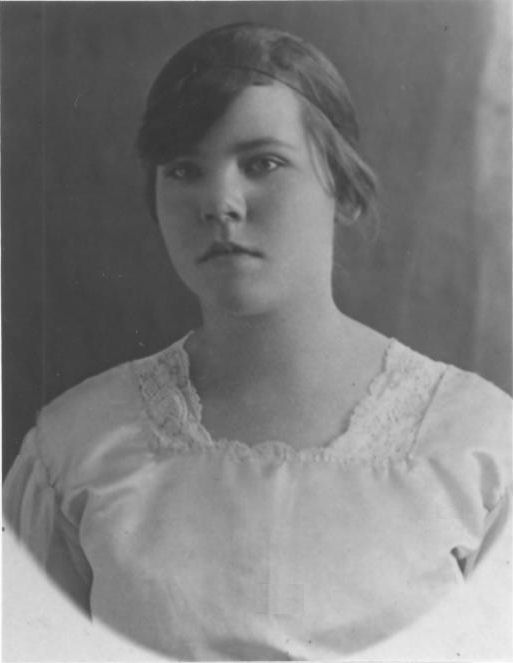
Vyla
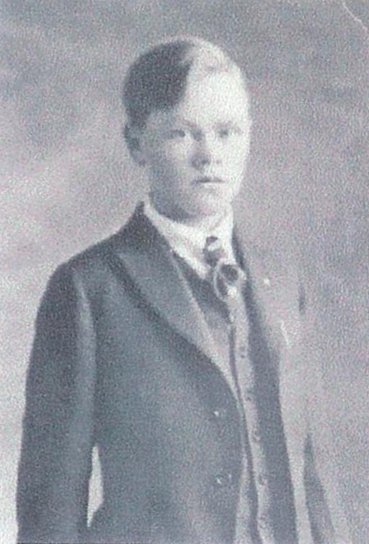
Myrl
Burley
was established in 1905 and was growing fast. The L.D.S. members
built a church house on the corner of Thirteenth and Conant Ave.
where the Dayleys began attending church services in the Burley Ward.
A few years later the people in the Starr's Ferry area became a
branch of the Burley Ward. At first their meetins were held in the
school house until a chapel could be built. Soon after that, it
became a ward.
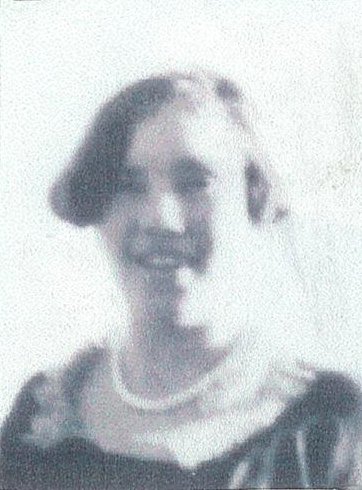
Jannette
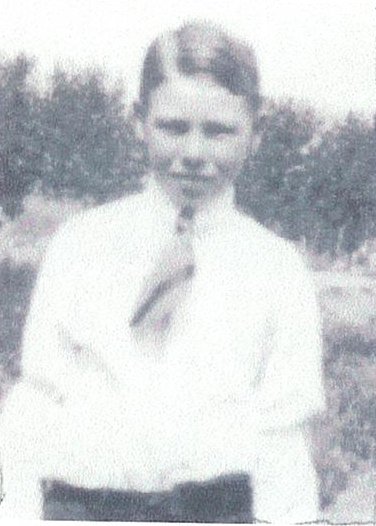
Delbert

Daisey
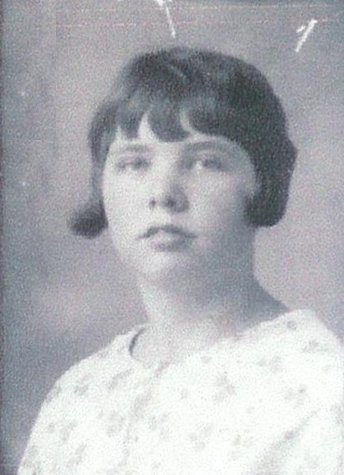
Nina
The children attended school in a little one room schoolhouse with a boxcar roof two miles south of Burley and two and three-quarters west. A man named Nimrod Good was the teacher. Then they moved to a new school about a half-mile east of the old one. It was a nicer building, although just one room, for twenty-five to thirty students for grades one through eight.
For the first few years after moving to Starr's Ferry, they spent some winters living in Basin. The school in Basin where the children attended was a two-story building. Mr. Blackburn taught the four upper grades upstairs and Miss Best had the lower grades.
After a few years, they added a room to their house and partitioned off the other, making three rooms. Carrie was busy raising their family which now included Emma Jannette who went by Jennette (19 May 1907), Delbert Enoch (20 Jun 1909), Thelma who died the day she was born (22 Sep 1911), Carrie Daisey who went by Daisey (21 Aug 1913), and Nina Mae (5 Sep 1915).
Carrie was a very kind and patient woman. She was a good manager and very frugal, saving what she could. There were times when there was not much in the house to eat, but she always managed to have something and her family never had to go hungry. She would have good hot bread and butter, cold milk and nice hot beans ready for the children when they got home from school after walking through and over big drifts of snow for one and three-quarters of a mile.
Carrie continued her talent for drama and played the accordion. The children would hurry and do the dishes on a winter night so they could sit around the kitchen table by lamplight and have her read to them. She read stories with such feeling and expression that the kids were really entertained by her.
Delbert died from diphtheria at the age of eleven on October 30, 1920. Later that year, their children began marrying and starting families of their own. The first was Vyla, who married Ira Frost on December 4, 1920. Next was Slim who married Rhoda Marie Keaton on October 3, 1923 followed by Jannette who married Henry Rassmussen on June 11, 1925. A few years later, Mryl married Alta Bell on June 24, 1929.
In 1925 they moved
into Burley at 1000 Schodde Avenue. Charles was away much of the time
in the winter working at the Legislature in Boise. He worked at the
sugar factory and other places until he was not able to work anymore.

The Dayley home on Schodde Avenue
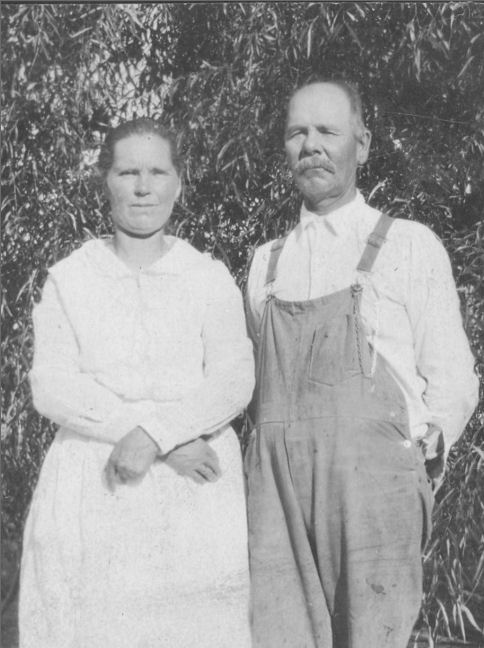
Carrie and Charles - 1926
Carrie did housekeeping at times in some homes in Burley. There was an incident where she saved the life of a little girl. One very cold winter morning as she walked to work, fighting the huge snowdrifts, she saw a small girl sitting in the snow. The child was so cold that she was in a daze and nearly frozen. Carrie picked her up and carried her to her home. She was the Bishop's daughter and apparently, had not been able to keep up with the older children as they walked to school in the wintry weather. She surely would have died without Carrie's help. She was sore and bruised for a few days due to the little girl clinging so hard to her body as she carried her home.
She
was quite intelligent and wanted her children to get an education.
Since none had graduated from High School, she persuaded Nina, the
youngest to finish school instead of getting a job to help with the
family finances. She was proud when Nina did graduate.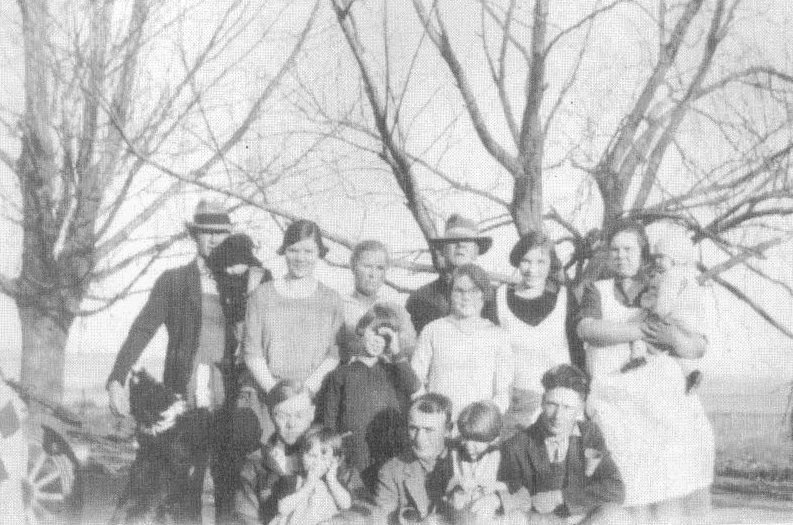
The Dayley Family - 1926 Back: Slim holding Dorothy, his wife Rhoda, Carrie, Charles, Jannette, and Vyla
holding Myron. Middle: Nina and Daisey. Front: Myrl holding Thelma, Ira Frost holding Eunice, and Henry
Rassmussen. At the time of this picture, Rhoda was expecting Nelda, Jannette was expecting Bertha, and
Vyla was expecting Celia.
The younger children eventually got married and started families of their own as well. Nina married Raymond Peck on September 29, 1935. They were later divorced and she married Ralph Bowen Heward on March 17, 1944. Daisey married Alfred Leon Moore on October 13, 1941.
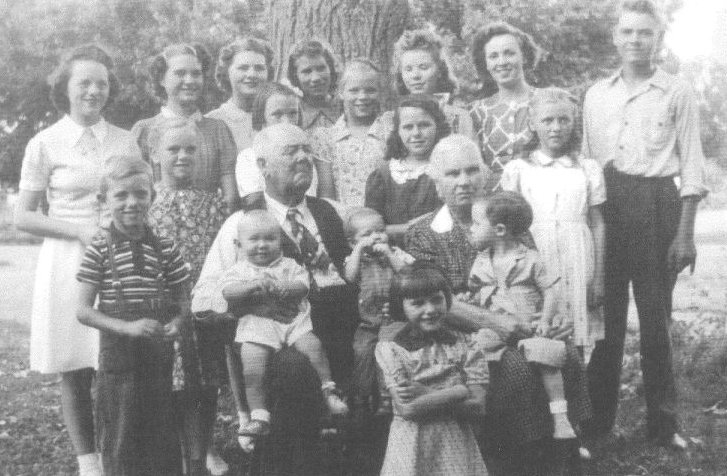
Charles and Carrie with their grandchildren in 1941. Back row: Thelma Frost, Celia Frost, Eunice Frost,
Lois Dayley, Maxine Dayley, Nelda Dayley, Dorothy Dayley, and Myron Frost.Middle Row: Irma Frost,
Sherell Dayley, Lorna Frost, and Marian Frost. Front: Gerald Frost, Ronnie Moore on Grandpa Dayley's
lap, David Dayley, Grandma Dayley holding Lonnie Peck
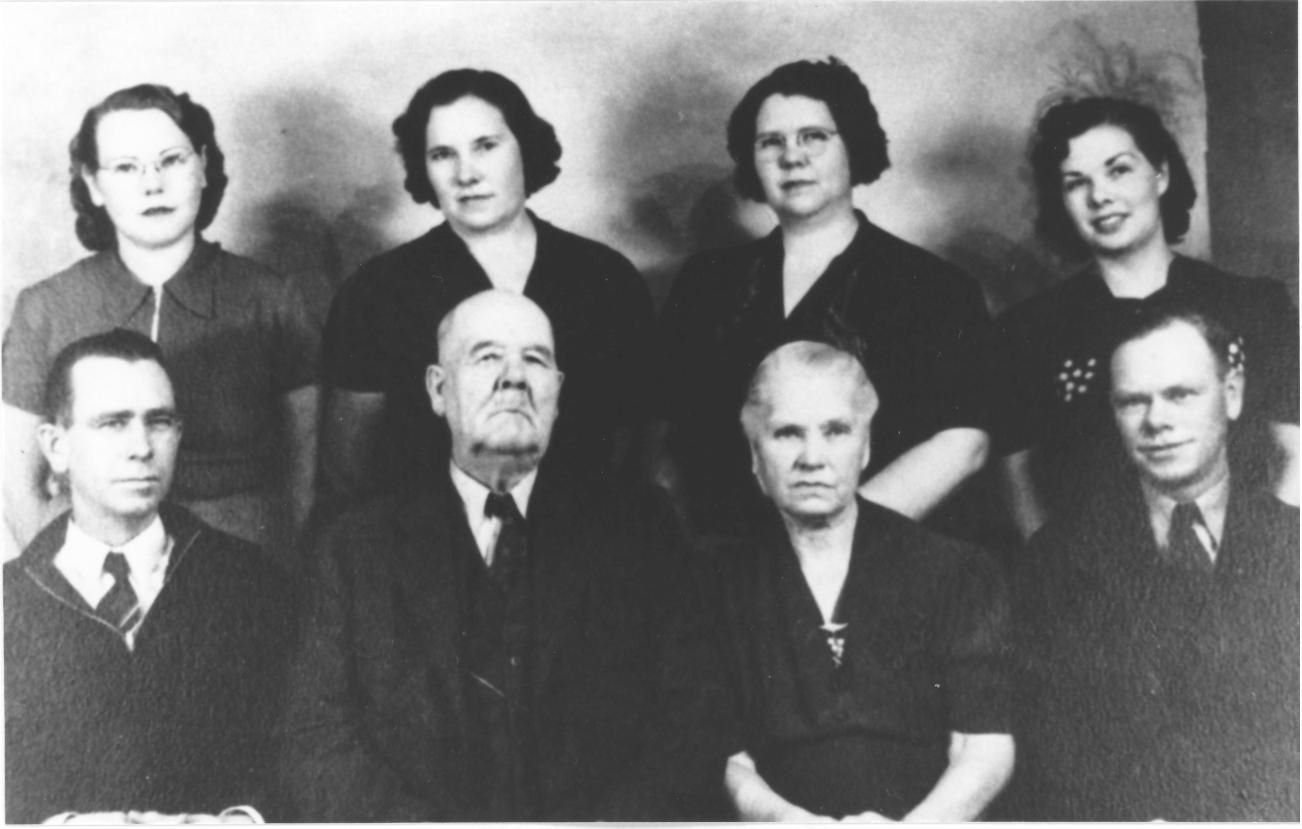 The Dayley Family - Standing: Daisey, Jannette, Vyla, and Nina. Seated: Slim, Charles, Carrie, and Myrl. |
Charles
died suddenly from a heart attack on the night of July 4, 1943 at he
age of 76. They were sealed by proxy on January 16, 1947 in the Idaho
Falls Temple. Carrie lived in the old home for nearly four
years, then she sold it and bought a little house out in the country
by her daughter, Vyla Frost. Her hobbies were raising flowers and
crocheting. She get very lonely sometimes living
alone. Once she went to Los Angles California
late in the winter of 1948 to visit her son, Myrl, where she saw many
interesting things and enjoyed every minute of the trip. 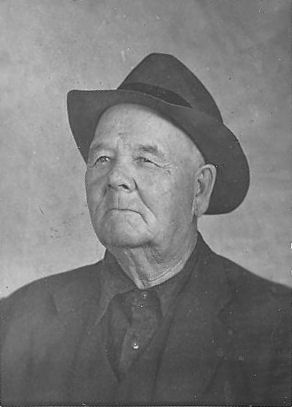
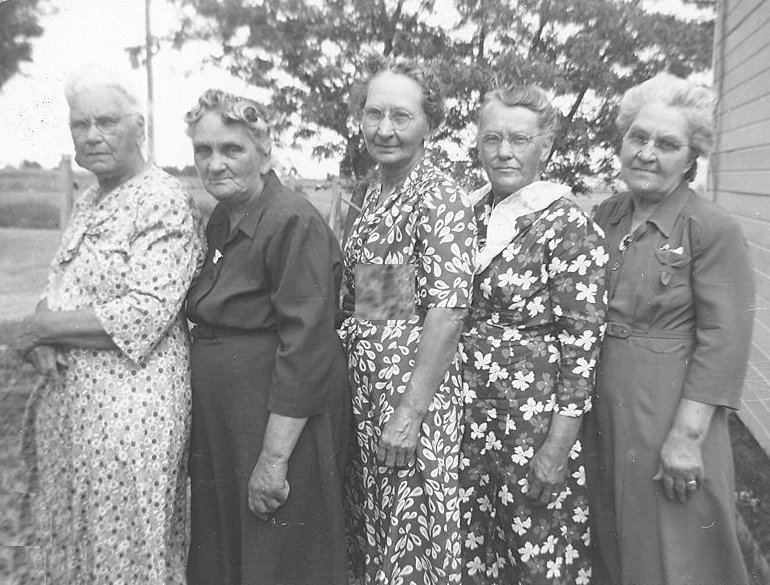
Carrie and her sisters in 1949:
Carrie, Ella, Abbie, Mae, and Mattie
Carrie
had long white hair. She never cut it except an occasional trim. It
went way down past her waist and she wore it in a bun. She was of
medium height and had a huge lump on her jaw but it never seemed to
cause problems. She was a quiet lady and not very demonstrative. She
didn't show much outward emotion or excitement. She just visited in
her own quiet way with the air of a very refined lady. 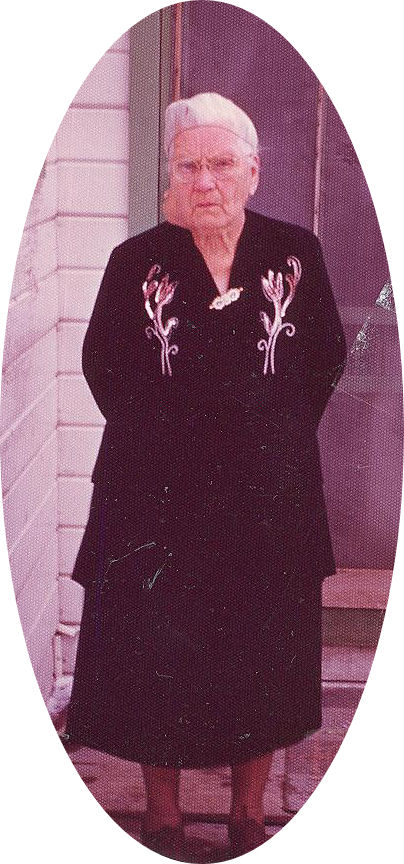
After Vyla and Ira built their new home over on the hill, they moved her little house over there so that she could live by them. She spent hours doing her beautiful crocheting making many doilies for everyone. She passed away on December 30, 1957 after suffering a stroke a short time before. Her funeral was held in the Burley Third – Sixth Ward Chapel with Bishop Morris E. Baker of Unity officiating. She was buried in the Pleasant View Cemetery in Burley, Idaho next to her husband.
* * * * * * * *
Compiled from a brief account in her own words and remembrances from Vyla Dayley Frost and Rhoda Marie Keaton Dayley.